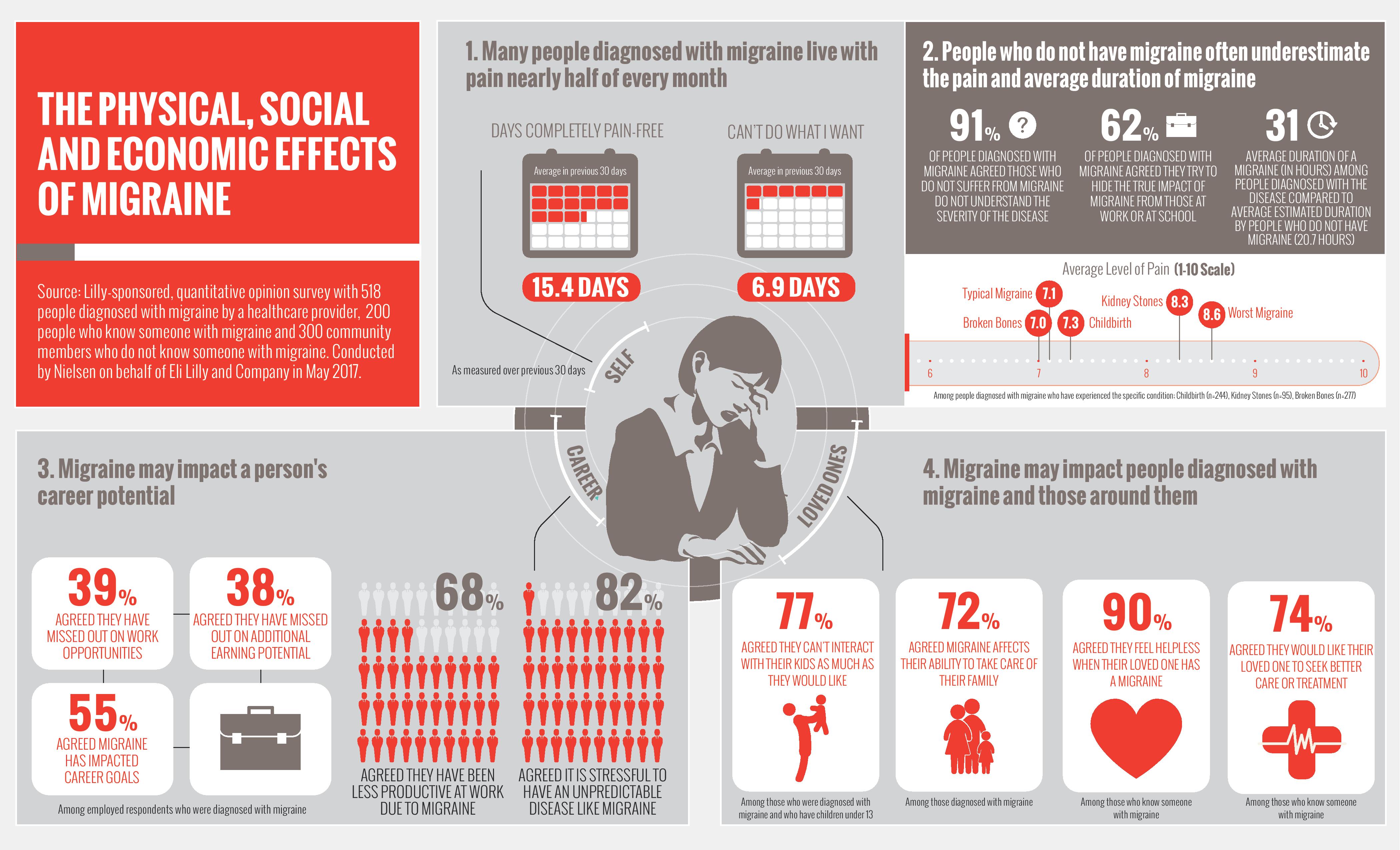The survey found that the physical, social and economic impacts of migraine can be frequent and far-reaching. Respondents diagnosed with migraine on average experienced just 15.4 completely pain-free days over the previous 30 days. During the same time period, respondents reported that symptoms prevented them from doing what they wanted to do for one week (6.9 days). These missed activities include less time spent interacting with children, lowered productivity at work and a hindered ability to make plans.
“Sometimes even people with migraines don’t realize the impact of their disease,” Aurora says. “When I treated patients with migraines, I would ask them how many migraine headache days they had, and they would have to stop and think about it.”
In addition to causing patients to miss important events, migraine can have a significant negative impact on non-sufferers. Ninety percent of surveyed family members and caretakers of migraine sufferers said they feel “helpless” when their loved one has a migraine and that they wished that their loved ones could seek better care or treatment for their symptoms.
America’s biopharmaceutical researchers are working to unravel the underlying drivers of migraine and bring a new wave of treatment options to patients. With science moving rapidly, there is real hope on the horizon for patients. Click here to learn more.

